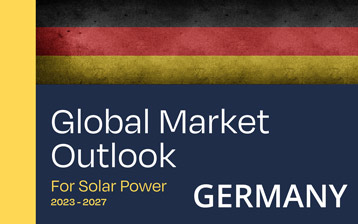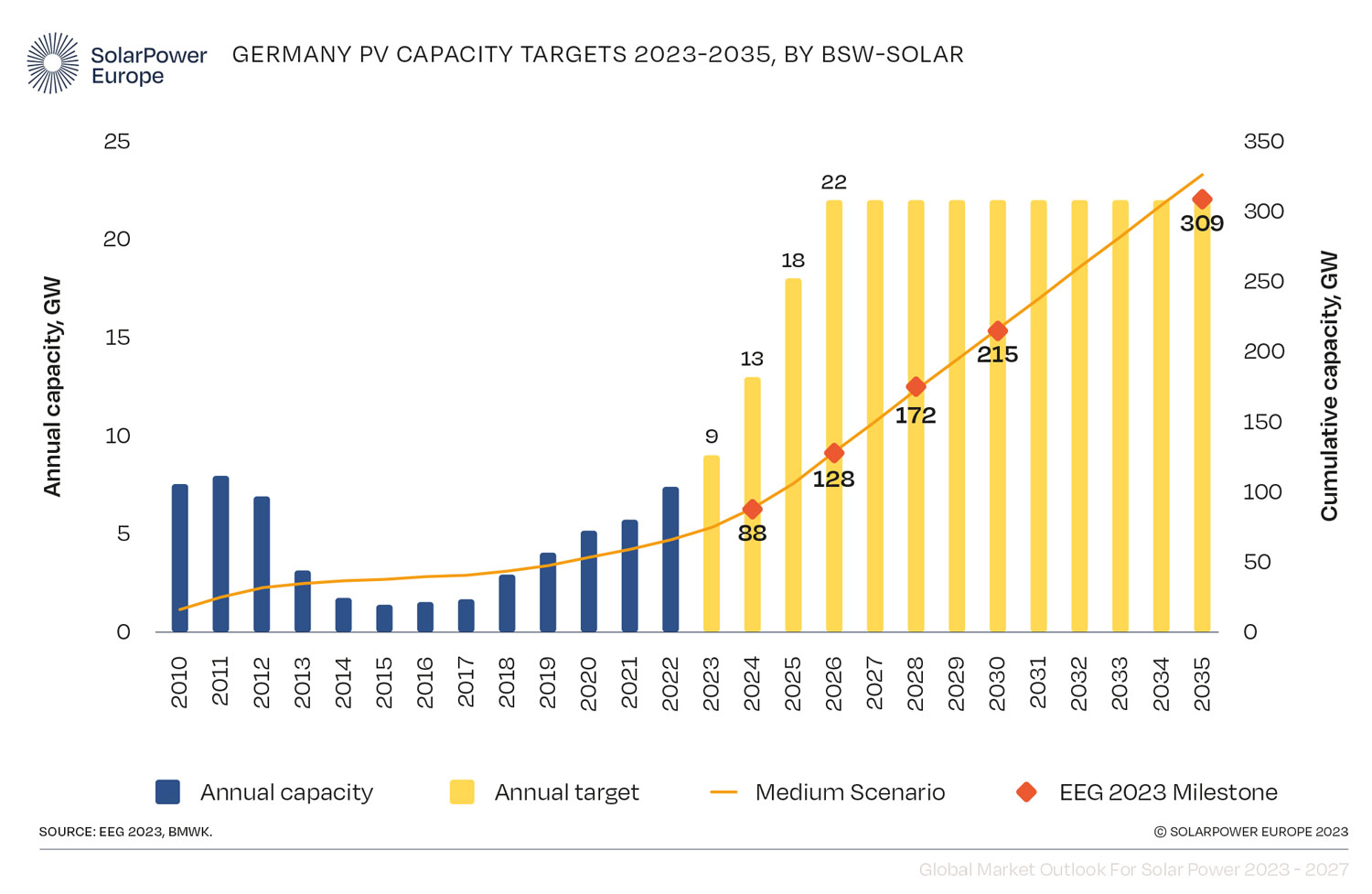The German photovoltaic market among all European markets is the most stable and continuously growing, according to the German Federal Network Agency (Bundesnetzagentur, BNetzA) in the first months of 2023 2.74 GW of photovoltaic solar energy were already put into operation, and in 2022 7.4 GW of photovoltaic solar power plants were put into operation.
By the end of March 2023, 70.3 GW of solar photovoltaics are calculated to be in operation in Germany, one of the markets with the largest production in Europe.
Germany seeks to meet the government’s target of increasing the annual GW of installation to 22 GW of installed PV power in 2026, aiming for a total installed PV capacity of 215 GW by 2030.
The so-called ‘Easter Package’ adopted in July 2022 set these ambitious targets with an aim to reach almost 400 GW by 2040.
German Development Plan
Between 2022 and 2023, many realised projects, more than 6.5 GW benefited from various opportunities and programmes in the field of renewable energy made available by the country’s Energy Sources Act (EEG).
Overall, the first quarter of 2023 shows steady growth in the solar market, with 40% more capacity installed than in the first quarter of 2022, which in turn showed a 39% growth over the same period in 2021.
This trend implies a continuous growth path for the sector in Germany.
The current trend is one of continuous annual growth, and the 9 GW capacity planned for 2023 by the Federal Ministry for Economic Affairs would appear to be effectively reached or even exceeded.
Efforts to accelerate the energy transition, reduce Russian gas imports and dependence on nuclear power have demonstrated the country’s determination to stay on course, thanks in part to rapid changes to Germany’s EEG 2021 regulation and a new EEG 2023 regulation package.
VAT exemption on systems of less than 30 kW
In 2022, photovoltaic systems of less than 30 kW were also granted a VAT exemption, at least reducing the administrative burden for owners and allowing installers to completely remove the VAT component from their sales proposals and invoices.
Small solar systems up to 600 W benefit from simplified grid connection procedures and ‘balcony solar’ has become a real trend in Germany.
Further legislative changes are ready to increase the threshold to 800 W and to allow grid connection via simple electrical sockets.
New regulations also for photovoltaic systems above 135 kW
Finally, problems in the certification of solar photovoltaic systems above 135 kW could be partially alleviated by a temporary certificate granting provisional grid access, as requested by stakeholders and associations.
Further regulations and amendments are also planned to facilitate the deployment of solar PV, reduce bureaucratic burdens and speed up grid connections, among many other aspects.
Germany: Europe’s key domestic battery market
According to SolarPower Europe’s European Residential Battery Market Outlook 2022-2026 and the latest calculations by BSW-Solar, Germany continues to be the key European market for domestic batteries.
While around 140,000 units with a storage capacity of over 1.3 GWh were installed in 2021, 214,000 units with a total storage capacity of 1.9 GWh were installed in 2022, increasingly in tandem with photovoltaic systems.
For the next five years, Germany is expected to remain Europe’s largest market for residential batteries due to a very strong solar market and high retail electricity prices combined with high demand for electric vehicles.







